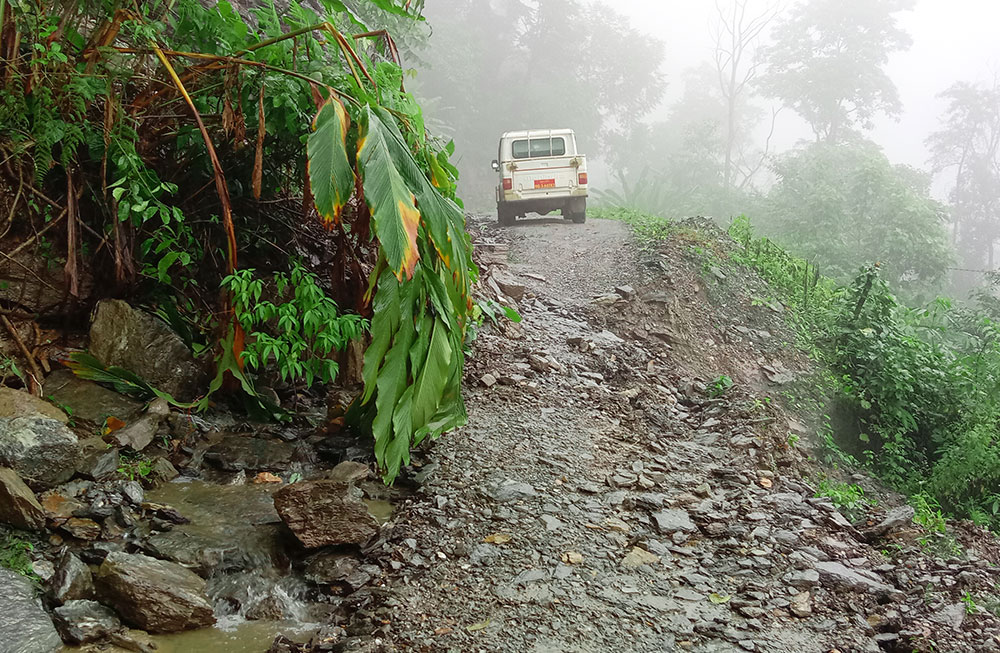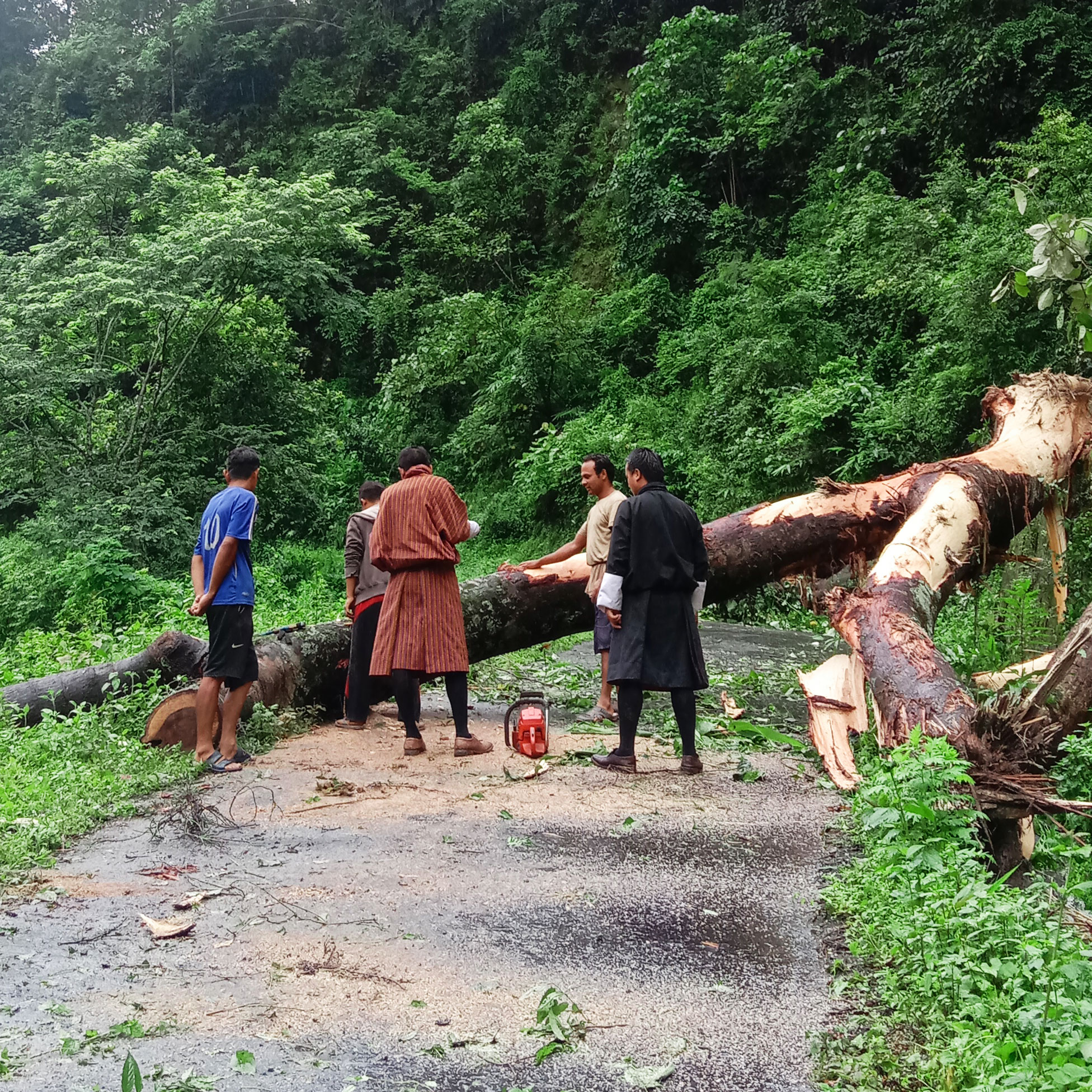Choki Wangmo | Dagana
Dorona is a remote gewog in Dagana. During monsoon, Dorona considered one of the poorest gewogs in the dzongkhag remains inaccessible.
I was advised against travelling to Dorona that shares border with Getana in Chukha and Karmaling in Lhamoidzingkha, Dagana.
I started to make the 30-km journey around 8am from Dagapela town. It rained the whole night. But I had to make the journey. Before long, I encountered the first major roadblock on the Dorona gewog centre (GC) road.
An excavator from the nearby project site took hours to reach the block site. Getting pass the protocols took time. Boulders continued to slide in the meanwhile.


The road to Dorona worsens during monsoon
About 15 minutes after crossing the first roadblock, an old tree had fallen right in the middle of the road. A few people had gathered to clear but the tree was too big for the tools the men had with them.
Further on, the road is not suited for amateur drivers. The blacktop of the poorly aligned narrow roads were washed away by the monsoon. Huge potholes continuously threatened to throw the vehicle off road.
“It feels like I am on a National Geographic adventure,” said one of my travel companions.
With 96 percent of the gewog under forest cover and no settlements nearby, if one is stuck on such roads, help won’t come soon. With an average annual rainfall of 1,646.9ml, Dorona is always rainy and foggy. The situation worsens during monsoon.
One of the five chiwogs—Dorona Chewa—is yet to be connected with a road. It is six hours away from the GC. The gewog received electricity connection in 2013.
The population of 2,060 includes Sharchops, Kurtoeps, Ngalops, Khengpas, and Lhotshampas spread across 15 villages.
Before reaching the GC, there was another major roadblock. Sliding agricultural land created numerous roadblocks. A house was precariously located on the mouth of the landslide.
Clearing and driving through the road, it took about five hours, which actually is one-and-half-hour journey.
Gup Suk Raj Rai said that the gewog was a disaster-prone area with windstorms and heavy rainfall affecting the area every year. “Since the landscape is marshy, we can’t help but be at nature’s mercy.”
The gewog spends a major chunk of the budget in maintaining the roads.
Recently, at the Dagana Dzongkhag Tshogdu (DT), Dorona gup raised the issue of the gewog centre road maintenance. He said that with Nu 30,000 budget provided per km annually to maintain GC roads, it was not enough. Many DT members raised similar issue in their gewogs. “We do not get enough workers with minimum wage rate provided.”
Dorona GC road is pliable for only three months in winter. Most of the residents walk for two hours to Geserling.
It is 3pm. An elderly lady who came for an event at the gewog lhakhang called out to her friends: “It is time to leave. Before dusk we have to cross that stream. Otherwise, we could either get washed away or be stuck on the way at night.”
She wore a rain boot and was holding an umbrella. Her kira was tied till the knees.
In 2015, the monsoon completely cut the gewog off. Essential items had to be airdropped.
A civil servant who has been here for three years has applied for transfer. “When I was first posted here it was winter and I was excited. But once the monsoon started, life became very difficult.”
The gewog did not have a gewog administration officer for a year.
The yellow clayey soil has added to the problems. The ground is muddy and filled with puddles.
Not being able to face such challenges, young people are quickly leaving their villages. There are 50 goongtongs in the gewog.
Tshering Yangzom, who resettled from Mongar in Dorona in 2003, however, said that the economic conditions had improved slightly.
“When I first came here, I hired mules to carry my belongings. The place was a thick forest. The primary school construction had not even started,” said Tshering Yangzom, who is a sweeper in the school.
She has cultivated cardamom and citrus in her five-acre land.
More than 200 acres of land in the gewog is under cardamom cultivation. But with such road conditions, marketing is a formidable issue.
The agriculture extension officer, Indra Bahdur Raika, said that since last year, people ventured into commercial winter chilli production. People also rear cattle, poultry, pigs, goat, sheep, and horses.
A teacher said that although there were high attrition rates among students after completing their primary education, they now seek works in agriculture instead of loitering around.
Edited by Jigme Wangchuk


